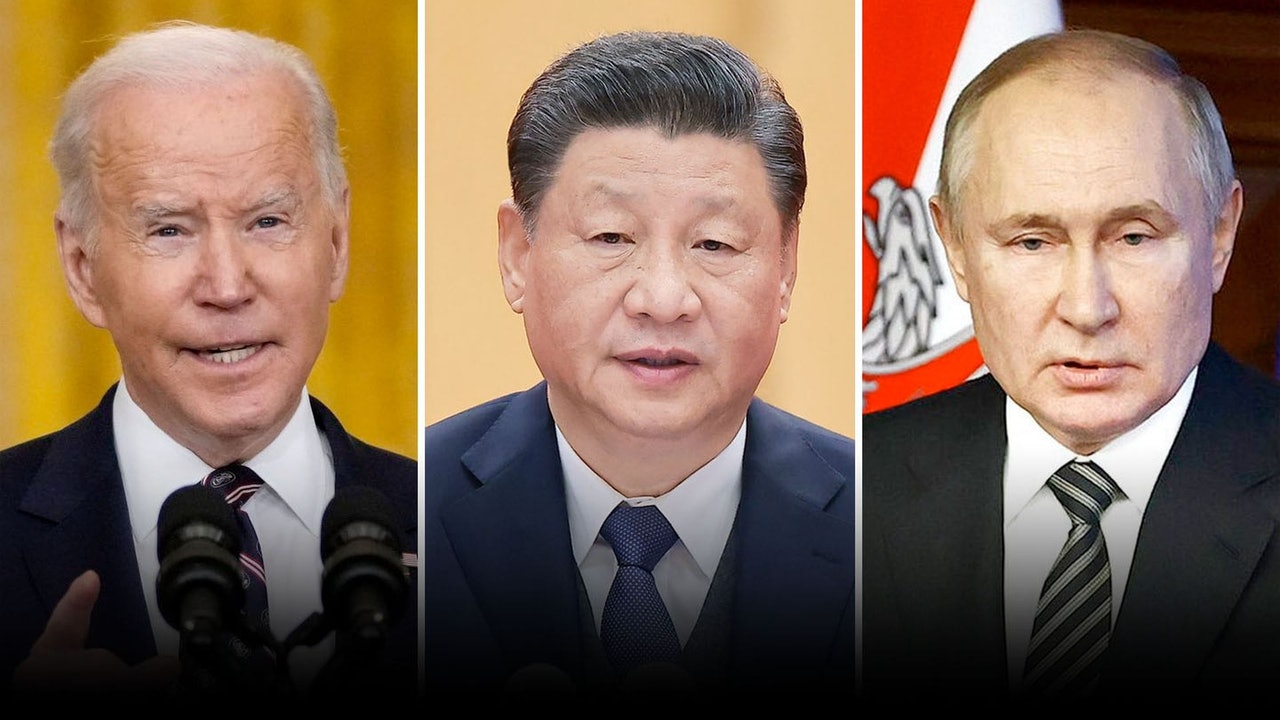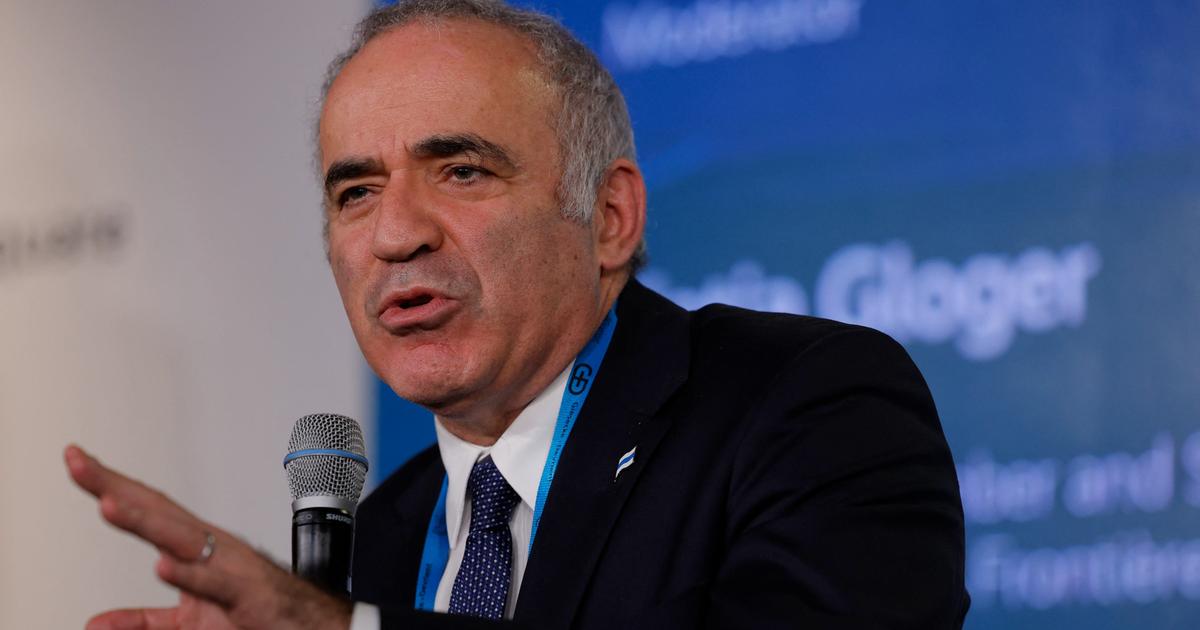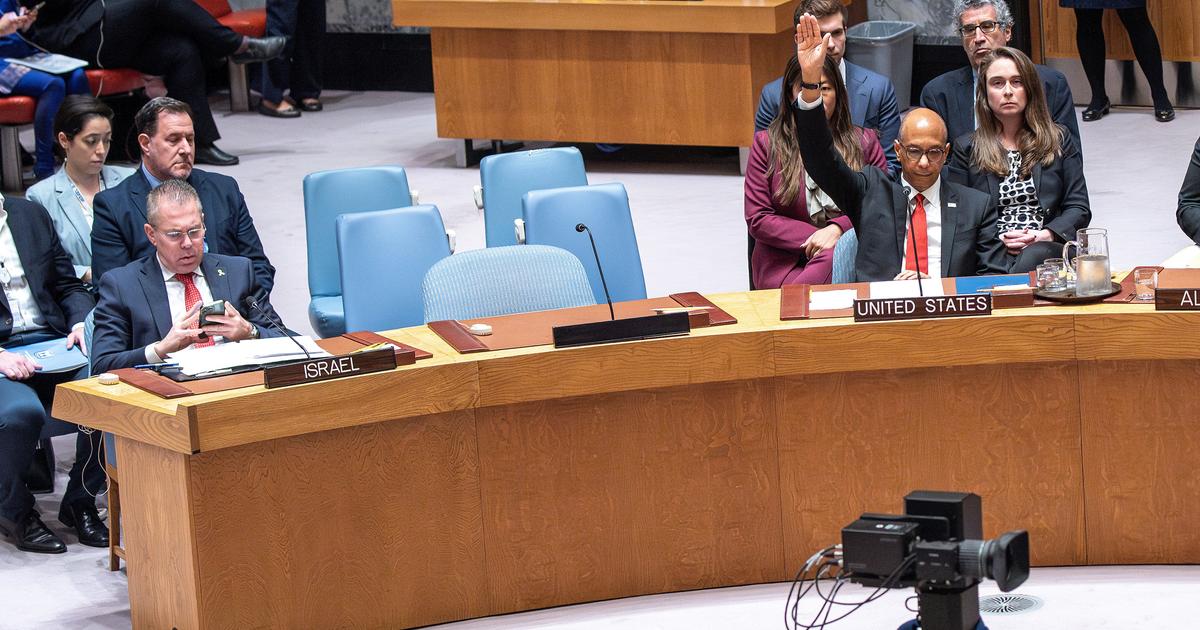Following the riots in the Kyrgyz parliamentary elections in October 2020 and the failed coup attempt in Kazakhs in January 2022, Central Asia has recently experienced renewed turmoil.
On June 25, Uzbekistan announced a draft amendment to the constitution, which involved more than 170 amendments and additions to the current constitution, including increasing the presidential term from five to seven years and prohibiting the death penalty.
According to Uzbekistan's previously announced constitutional amendment process, the draft amendment to the constitution will be reviewed on July 5, and then a nationwide referendum will be held.
However, on July 1, large-scale demonstrations broke out in the Autonomous Republic of Karakalpakstan in Uzbekistan.
Judging from the published draft amendments to the constitution, the key to the anger is that the Uzbek constitution originally described Karakalpak's "sovereignty" and "the right to vote to leave Uzbekistan", but the above content will be changed after this amendment. In the eyes of the people of Karakalpak, this move is undoubtedly a deprivation of local autonomy; in addition, the local opposition leader Dauletmurat Tazhimuratov originally called on the people to take to the streets to demonstrate on July 5. The arrest of the Ukrainian police before the event took place sparked outrage in the streets of Karakalpak.
Uzbek President Mirziyoyev attends the opening ceremony of the Winter Olympics in Beijing, China, on February 4, 2022.
(Getty)
In response to this situation, the Uzbek Ministry of Internal Affairs issued a statement on the evening of the 1st saying that some citizens of Nukus, the capital of Karakalpak, took to the streets and marched on the streets due to "misunderstandings" about the ongoing constitutional reform of the republic. The Central Farmers' Market organized illegal demonstrations.
On July 2, the Legislature, the Council of Ministers, and the Ministry of Internal Affairs of the Autonomous Republic of Karakalpak issued a joint statement stating that the "protests" in Nukus city were organized by criminal groups in an attempt to occupy the executive branch of Karakalpak and thereby split. society and destabilize the political stability of Uzbekistan.
The statement also pointed out that there were also "malicious foreign forces" involved in the incident, "who attempted to influence the development of the situation in Karakalpakstan, including the release of targeted information and distortion of current events."
On July 2, Uzbek President Mirziyoyev (Shavkat Mirziyoyev) personally went to Nukus city to meet with representatives of various parties in Karakalpak, saying that he had decided to cancel the clause concerning the status of the autonomous republic in the upcoming constitutional referendum.
At the same time, Mirziyoyev also announced that Karakalpak entered a one-month state of emergency, starting at 0:00 on July 3 and ending at 0:00 on August 2.
During the state of emergency, the entire district will implement a curfew from 21:00-07:00, while restricting the entry and exit of people, and all public activities are also prohibited.
According to Uzbekistan's State of Emergency Law, the country's defense forces will be stationed locally to ensure social security.
On July 4, the Uzbek government said 18 people were killed and 243 injured in the unrest.
The development of the situation so far seems to be gradually easing. However, Mirziyoyev went to Karakalpak twice in three days and announced the activation of a one-month state of emergency. The Ukrainian government is very cautious in dealing with this matter. The reason for this may be a lesson from neighboring Kazakh.
Fuel prices in Kazakhstan have risen sharply, sparking mass demonstrations and anti-government riots since January 2.
The picture shows that on January 10, soldiers and police officers blocked the streets in Almaty, Kazakhstan.
(AP)
How is it similar to the Kazakh riots?
On January 2, 2022, large-scale demonstrations broke out in Kazakhstan due to the increase in LNG prices, and riots quickly spread in Mangystau, Turkistan, and Aktobe. , Almaty and the capital Nur-Sultan and other places, and under the influence of multiple factors, it has gradually escalated into a mixed war, and there have been threats of attacks on government agencies and beheadings of security personnel in many places. people screen.
On January 5, seeing the situation gradually getting out of control, Kassym-Jomart Tokayev declared a two-week state of emergency and requested the Collective Security Treaty Organization (CSTO, CSTO) to send peacekeeping troops to Kazakhstan. ; On January 8, the CSTO peacekeeping force arrived in Nur-Sultan, the capital of Kazakhstan, and began to carry out the peacekeeping mission; on January 10, Kazakh entered the national day of mourning, and the situation had stabilized. "Coup d'etat", the Chairman of the Kazakh National Security Council (Ministry of Security), the National Security Director Karim Massimov, and the Deputy Secretary-General of the National Security Council Azamat Abdymomunov and other officials were arrested and handed over to trial; On January 11, the CSTO peacekeeping force decided to gradually withdraw from January 13, and the incident came to an end.
The riots resulted in 227 deaths and thousands of arrests.
In view of the long-term uneven regional development and the stratification of clan politics within Kazakh, it is natural that the public will take to the streets for the price increase of liquefied natural gas; but the paradox is that after the Kazakh government announced a price cut for the common people's grievances, the poor state. The crowd of demonstrators gradually dissipated, and the riots in Almaty, Nur-Sultan and other big cities became more and more intense, and thus split into three main lines of conflict.
On January 8, Kazakh soldiers stopped vehicles on the road in Almaty, Kazakhstan.
(AP)
First, the instigation of foreign forces, such as the anti-Kazakh authorities, Mukhtar Ablyazov, who was exiled in France, called on the people to take to the streets through his own NGO in Ukraine, "Democracy for Kazakhs" (DVK). Second, there is a phenomenon of infiltration within the regime. For example, Massimov and other national security units allow the situation to get out of control and allow thugs to take over the arsenal. Pan-Turkist Violent Organization.
In general, the demonstrations on economic issues were manipulated by foreign forces and gradually turned into a "color revolution" that subverted the regime. However, this process was partly hijacked by violent terrorist forces, which eventually led to large-scale out-of-control violence.
And the outbreak of the riots in Uzbekistan, there are some similar phenomena.
First, foreign opposition forces with ties to Europe and the United States have begun to take active actions. Take the Russian-language media “NEXTA”, which is headquartered in Warsaw, Poland, has nearly 1 million followers on its Twitter account, and was highly exposed in the Belarusian demonstrations from 2020 to 2021 as an example. After the demonstration began on July 1, he stated in the Russian-language Telegram channel that "because the Uzbek media ignored this large-scale demonstration, the local people asked the Western media to carry out propaganda in order to attract the attention of the international community", and called on all parties to record The photos and videos of the demonstration site were sent to the mailbox provided by him, and he began to send them frequently on the channel, and many clips were quoted by Western media.
On Twitter, NEXTA and the Berlin-based "Uzbek Forum for Human Rights" also actively created topics, including "opposition leader Tazmuratov is in intensive care in hospital, in serious condition" and so on. ; In addition, other non-governmental organizations (NGOs) with strong Central Asian colors have also responded positively, such as the "Free Kazakhs" headquartered in the United States, which has tried to associate this matter with the anti-Kazakh authorities and support for the East Turkic forces. , linked to anti-Russian ideology, published the words "Nursultan Nazarbayev = Tokayev = Lukashenko (Alexander Lukashenko) = Xi Jinping = Putin (Vladimir Putin)" and said that The same group led to the blood of Kazakh, Ukraine and Uzbekistan; the "Association Central Asia", which is based in Sweden and advocates for the democratization of Central Asia and gathers the Uzbek exiled opposition, also condemned in an interview with Western media. The Ukrainian government "used lethal force" and "the authorities should have chosen dialogue and negotiation from the very beginning."
On August 23, 2020, in Minsk, the capital of Belarus, nearly 200,000 people gathered in Independence Square and Independence Avenue near Lukashenko's official residence. Riot police were on guard.
(AP)
In addition, in Karakalpak, rioters attacked the arsenal, seized weapons, and then attacked the Nukus Airport. This is the same as when the rioters attacked the arsenal and then went to occupy the Almaty Airport during the Kazakh riots. Several government offices were also attacked this time, and it can be seen that the situation is also escalating towards a hybrid war.
However, the riots in Uzbekistan are also different from those in Kazakhs.
As a result, the Uzbek government may have interrupted Karakalpak's Internet service after July 2, and dispatched troops to quell the chaos, closed the border with Kazakh, cut off local and overseas contacts, and restored the government's control of the airport. , the actual control of various agencies, so the riots as a whole quickly subsided, not as chaotic as Kazakh for a few days, and even the CSTO came to peacekeeping; secondly, according to the latest information released by the Uzbek government, there are no officials within the government. He was punished or accused of "cooperating with the inside and the outside" in the process. The overall incident did not set the tone for the "attempted coup d'etat." The Yev regime has dealt a blow, but not yet so severe that the ruling clique is openly opposed to it.
To sum up, although Uzbekistan has some characteristics of "color revolution" this time, it did not follow the script of Kazakh and Ukraine, which may be related to the failure of the mobilization of the infiltration structure, the consensus reached by the ruling group, and the rapid government response.
The collective security treaty organization peacekeeping force has completed the withdrawal of Kazakhstan.
The picture shows the Russian peacekeepers.
(AP)
Complex riots and the game of great powers
When looking closely at the local political structure of Uzbekistan, various unstable factors constitute a hotbed of riots, and to some extent shape Uzbekistan's foreign policy.
In terms of the composition of the ruling group, Uzbekistan is the same as Kazakh, Kyrgyzstan and other Central Asian countries. The essence is an alliance game between various clan-regional groups. Its main rival, the "Samarkand clan", is famous for its control of Uzbekistan's internal affairs and is the origin of the two presidents since independence; Smaller groups such as the Jizzakh clan also participated in the integration of the first two clans.
Therefore, for the President of Uzbekistan, gathering the consensus of the ruling group, ensuring the loyalty of the national security system, and properly distributing interests are the keys to maintaining political stability.
In addition, Uzbekistan has suffered from extreme Islamic forces since its independence.
In the 1990s, after some Islamic groups that advocated the violent overthrow of the secular government were wiped out, they fled into Afghanistan, the stronghold of terrorism at that time, and established the "Uzbek Islamic Movement" (referred to as the "Uzbek Islamic Movement") with the support of the Taliban, and cooperated with the "Uzbek Islamic Liberation Party" (referred to as Wuyijie, also known as "Izabut") has been active in the Fergana Basin in eastern Uzbekistan for a long time and has become one of the sources of chaos in Uzbekistan.
In May 2005, the "Andijan Incident" broke out in Uzbekistan, and its development can be described as the ultimate entanglement of color revolutions, the division of the ruling group, and the robbery of extremist Islam.
At first, the public demonstration was only to demand the government to release 23 businessmen arrested in Andijan who were suspected of being linked to terrorist organizations. However, groups such as the UY Movement later led militants to raid police posts, loot weapons and ammunition, and attacked the prison where 23 defendants were being held. , released more than 2,000 detainees.
During the period, various Western NGOs in Ukraine called on people to take to the streets, and portrayed the conflict as a "democratization movement", calling on all parties to unite and shout slogans such as "resign the president" to overthrow Islam Karimov's regime; The "Tashkent clan" that controls the national security system, out of the need to seize power, indulged the terrorists to rampage, trying to put the Andijan chief and the Ukrainian interior minister, who came from the "Samarkand clan", into crisis, causing the situation to be on the verge of getting out of control.
Former Uzbek President Karimov.
(AP)
After the last President Karimov reached a series of personnel arrangement agreements with the "Tashkent clan", the security forces finally dispatched to suppress the unrest in the area and quelled the incident at the cost of more than 1,000 deaths.
And because the United States played a certain role in the incident, the Karimov regime, which was originally pro-American, began a diplomatic turn afterward, expelling Global Involvement through Education, Ecumenical Charity Service, and Eurasian Fund. A large number of NGOs such as the Eurasia Foundation, Freedom House, Counterpart International, and Radio Free Europe have also announced that the US military is prohibited from renting the "Karshi-Hanabad" Air Force Base ( Karshi-Khanabad Air Base), severing military ties between the two countries.
At the same time, Karimov began to repair the interaction with China and Russia.
On November 14, 2005, Russia and Ukraine signed the Treaty of Alliance between the Russian Federation and the Republic of Uzbekistan, stipulating that "if one of the two countries is invaded by a third country, the other must provide necessary assistance, including military assistance." , and rejoined the CSTO in 2006; Karimov also visited China in the same year and signed the "Sino-Uzbekistan Friendship and Cooperation Treaty".
Afterwards, although the United States restored military ties with Uzbekistan through military assistance and assistance in counter-terrorism, and Uzbekistan withdrew from the CSTO again in 2012, as a statement to distance itself from Russia, overall, since 2005, Andijan has After the incident, Uzbekistan's foreign policy has maintained a "neutral line" that oscillates slightly between the United States and Russia. It not only wants to avoid being dominated by a single power in its internal affairs, but also seeks maximum benefits through bilateral asking prices.
On January 13, the CSTO troops began to withdraw from Kazakhstan. The Kazakh side held a farewell ceremony for the CSTO peacekeeping force in Almaty that day.
(Xinhua News Agency)
Looking back on this riot, it also has different meanings for China, the United States and Russia.
For the United States, it will not give up its plan to "export democracy" in Central Asia, but if the action fails, it will not insist on opposing the existing regime. After all, the ultimate strategic purpose of the "color revolution" is still to deepen the target countries' interest in the United States. Relying on, not promoting good governance, nor completely destroying U.S. relations with target countries.
If the Uzbek riots can successfully subvert the regime, it will be like a backstab to Russia, which is fighting in Ukraine, and may have a regional diffusion effect, promote the "Central Asian Spring", and have the chance to set fire to Russia's geographical backyard; but Apparently, the chances of success are extremely low now, so the U.S. should focus on maintaining relations with the Mirziyoyev regime in its next actions. On the surface, it "expresses concern" about the casualties, but in fact, there will be no substantial punishment. Unless the unrest recurs and spreads to other provinces in Uzbekistan, it may take advantage of the situation to intervene and subvert the regime.
For Russia, although it is not happy to see riots in Central Asia, it also hopes that Uzbekistan will become more pro-Russian because of this.
After the Uzbek side withdrew from the CSTO in 2012, Russia has always hoped to "reconcile" with it and bring Uzbekistan back into the organization. The Kazakh riots in January 2022 proved the role of security forces in stabilizing internal affairs. Therefore, after the Uzbek riots , there are also public opinions in Russia that Ukraine will be able to knock on the door of the Security Organization's membership again.
However, Russia experienced Uzbekistan's withdrawal in 2012 and was worried that its "excessive concern" would be counterproductive, so this time only Russian Presidential Press Secretary Dmitry Peskov came forward to say, "Everything that happened in Uzbekistan is the result of this country. internal affairs", that is, expressing support for the Mirziyoyev regime, but not publicly making other political initiatives and appeals.
Watching out for the United States to plan color revolutions and to avoid political alienation of other countries from itself is the way Russia faces Central Asia today.
For China, Central Asia is not its traditional geographical sphere of influence, and it is still a game field between the United States and Russia. Therefore, Beijing’s greatest interest here is not to seek regime rotation and political reform, but to deepen economic cooperation with the local area. Exchanges and industrial connections to solidify the foundation of the Belt and Road Initiative.
In this context, a stable political situation and society in Central Asia is the best state. Therefore, in the face of recent riots in Central Asia, Beijing has always supported the country's government to maintain order and opposed subversive activities such as "color revolutions".
Although such a statement is similar to Russia to a certain extent, it is different from the concept of "backyard". China has to overcome obstacles such as insufficient infrastructure and worrying security conditions when operating here, and it also faces Russia's doubts. The mutual trust between China and Russia still determines China’s strength in Central Asia to a certain extent. For example, in 1997, China, Uzbekistan and Kyrgyzstan signed the memorandum of understanding on the railway connecting the three countries, which continued to be delayed due to Putin’s opposition until the Russian-Ukrainian conflict in 2022. After the outbreak and the improvement of Sino-Russian relations, Putin nodded and released in May, and the project is expected to officially start in 2023.
In view of the short-term and difficult political and social problems of Central Asian countries, in the foreseeable future, this area is still a high-risk area of political turmoil, and the unfinished game between China, the United States and Russia will continue to move forward under the changing circumstances.
Tokayev "slapped in the face" Putin was "cut out of fuel": Is Kazakhstan moving away from Russia?
Wang Yi's visit to Kazakhstan: No extraterritorial forces are allowed to disrupt Central Asia, Uzbekistan declares a state of emergency for Karakalpak for one month, and Uzbek "Slingshots" decide not to cut Karakalpak's autonomy





/cloudfront-eu-central-1.images.arcpublishing.com/prisa/MOXXTLJT2Z6VEUX4YEOA3F4B2A.jpg)


/cloudfront-eu-central-1.images.arcpublishing.com/prisa/LVJL54B5LZD55C6MUUC7GEVHBQ.jpg)






